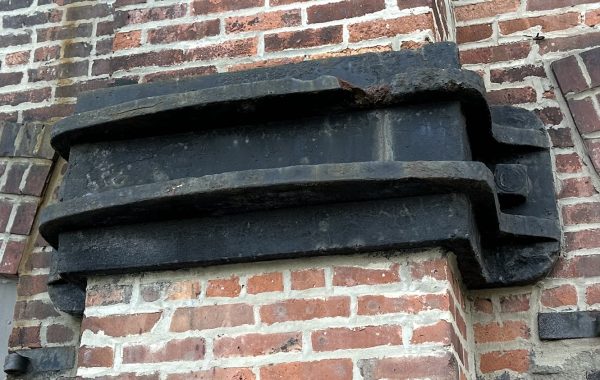I recently came across this in the cellar of an apartment house built around 1899:
It’s a big brick pier, something you expect to see in a bearing-wall building. But what’s that going on at the top, just below the modern tile ceiling? It looks a bit like stucco and a bit like the brick is melting, but up close, it turns out to be a very big block of stone. It was a lot of work to get that stone in place: a 40″ x 24″ x 12″ block of granite weighs over 1000 pounds and can’t be simply laid up like the bricks above and below it. So why is it there?
The building was constructed under the 1892 New York building code, which contains the following clue:

That first paragraph suggests a requirement that this pier does not meet: there is only one bond stone rather than a series of them at 30-inch spacing. However, it is not clear that this pier is supporting a beam, border, arch, or linnet over ten feet long. So maybe we haven’t uncovered a case of 117-year-old sloppy workmanship. In any case, this is a bond stone. There are requirements elsewhere in the code for headers to tie multiple-wythe brick together, but obviously the people who wrote the code did not consider headers to be sufficient to keep an all-brick pier from splitting apart. The bond stones were meant to counteract the pier’s internal outward-oriented forces.




You must be logged in to post a comment.